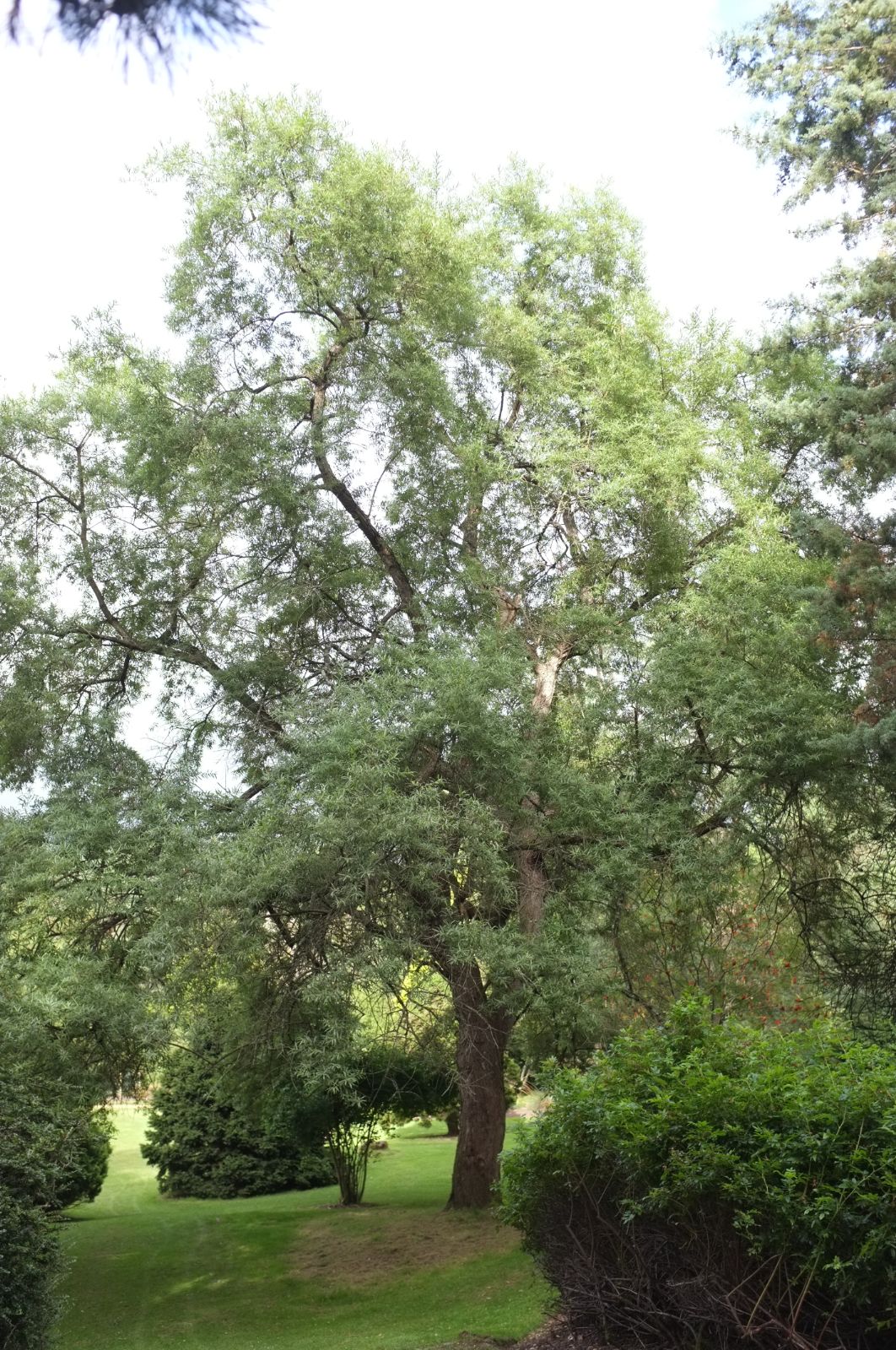Hippophaë salicifolia
Credits
Article from Bean's Trees and Shrubs Hardy in the British Isles
Recommended citation
'Hippophaë salicifolia' from the website Trees and Shrubs Online (treesandshrubsonline.
Genus
A deciduous, somewhat spiny tree 30 to 40 ft high, with a coarse bark cut into longitudinal flakes; young shoots covered with brownish down as well as scales. Leaves linear-oblong, 1 to 3 in. long, 1⁄4 to 1⁄2 in. wide, dull green (not silvery) above, the lower surface covered with a greyish white felt; midrib brown; stalk 1⁄8 to 1⁄4 in. long. Flowers as in H. rhamnoides. Fruits pale yellow.
Native of the Himalaya up to 10,000 ft altitude, and perfectly hardy at Kew, where there are three trees in the borders north of the Temperate House, the largest measuring 27 × 43⁄4 ft (1970). This species is inferior to H. rhamnoides in beauty. It is easily distinguished from it by its broader, not silvery leaves, felted rather than scaly beneath, and by the paler, less brilliantly coloured fruit. Introduced in 1822.

